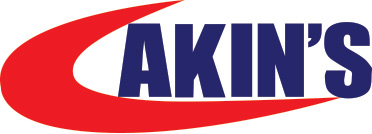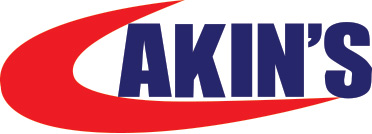
Thesecurityexchange
Add a review FollowOverview
-
Founded Date May 31, 1908
-
Sectors Healthcare
-
Posted Jobs 0
-
Viewed 41
Company Description
Crafting an Effective Recruitment Strategy & Processes

Thom. Our AI Coach
– Thomas Assess – Hiring Accuracy
– Improve Onboarding
– Boost Internal Talent Mobility
– Stronger Leadership Teams
– Unlock Employee Success

– Thomas Connect – Enhance Collaboration
– Enhance Team Trust
– Strong Manager Employee Relationships
– Unlock Team Potential
– Employee Engagement
– Hybrid Working
– Employee Wellbeing
– Managing Conflict
– All Resources – Blogs
– Guides
– Whitepapers
– News
– All Resources – Webinars
– Industry Pages
– Case Studies
– Community
– Company – About Us
– Careers
– Diversity & Inclusion at Thomas
– Global Offices
– Team Interaction Optimization
– Customer Stories
– Science Advisory & Innovation Board
– Become a Partner
– Additional Services – Professional Services
– Integrations
– Training
– Digital Badging
– Contact us
– Login
Crafting a Reliable Recruitment Strategy & Processes
Modern recruiting is a competitive company but a reliable recruitment method will identify the skill that’s right for the role, that matches the company’s culture, and will stay.
High personnel turnover and employee engagement are big problems for HR teams in this competitive landscape too. We’re seeing a real focus on getting things right at the recruitment stage to avoid the costly adverse effects of ill-matched hires.
This guide details how to form an effective recruitment technique, consisting of details on HR tools to support the working with process, how to determine development, and expert guidance on avoiding costly working with mistakes.
What is a recruitment strategy?
A recruitment strategy is a formal strategy that sets out how a company will draw in, hire, and onboard skill.
A recruitment technique need to include headcount preparation, employee worth proposal, recruitment marketing techniques, selection requirements, tools and innovations, and succession plans. This should all be covered by the recruitment budget plan.
Don’t forget to think about diversity and inclusivity when establishing skill acquisition strategies – top skill might be lost if this is ignored.
What does a recruitment strategy appear like?
A recruitment method includes numerous strategic methods operating in tandem to make sure the best talent is discovered and hired. These consist of:
Internal recruitment
Internal recruitment can be a huge time saver as there isn’t a protracted duration of interviews or onboarding. However, it can result in a lack of diverse concepts and innovation.
External recruitment
The most common technique for discovering new staff, external recruitment brings originalities, fresh approaches and renewed energy. However, it can take a long time and be costly to find the ideal prospect as external recruitment needs comprehensive screening processes and full onboarding.
Developing the employer brand name
Our employer brand requires to resonate with candidates – they need to feel lined up with the organization’s perceived image and see themselves in it. Show possible employees the values and the culture of the organization and how staff feel about working there to develop your employer brand and attract the very best candidates.
Direct marketing
Direct marketing in papers, trade publications, trade journals and notification boards is a fantastic method to target active task applicants, however this method will not discover passive prospects who aren’t trying to find a brand-new function.
Social network
Social media has actually become one of the most crucial recruitment methods for organizations. Using the right platforms is key, along with having the best content. But employers must always remember that social networks can be a hotbed for chatter and sharing negative experiences so the requirement for terrific prospect experiences is necessary.
Recruitment companies
It’s typical to outsource recruitment requirements to recruitment companies. Despite the fact that it may cost more to have them manage the entire procedure, they are well-connected professionals who are great at finding talent with the best capability. They can be particularly valuable when searching for specific niche roles.

Job boards
Monster, Reed and Indeed are three of the most popular online job boards – they cover nearly every category of job posting and industry. There are also specific industry-led task boards like TestGorilla that target a niche like medical agents.
Job boards are simple to utilize and make functions discoverable for prospects.
Employee referrals
This increasingly popular recruitment technique is a mix of external and internal recruitment. Simply put – existing personnel refer people they know for jobs. This technique is extremely affordable and personnel are more likely to refer people they rely on and will reflect well upon them, resulting in a more powerful candidate pool.
Internships and apprenticeships
Internship and apprenticeship programs are fertile ground for determining and nurturing the future leaders of a company. These employees can be moulded to the organization’s culture and they’ll grow to understand adremcareers.com the systems in place from the ground up which is extremely valuable as they advance.
Why might an organization need to transform its recruitment strategy?
Modern recruitment is hyper-competitive. Attracting leading skill to an organization and meeting their demands grows more complicated every day, as does persuading them to remain.
Why? Because the goalposts are always moving. Emerging technologies, various selection procedures and shifting expectations are all rewording the rulebook for what a recruitment strategy should appear like, along with how we motivate and deal with employees.
We’ve identified six recruitment trends that have a significant effect on what our recruitment technique, recruitment processes and recruitment marketing ought to appear like.
1. Candidate desires
A global lack of skill means candidates can dictate the type of career they have more easily. Their preferences tend to be more diverse and transient than those of the generations before.
Instead of remain with a single organization for numerous years, today’s workers invest time constructing a portfolio of experience, resulting in more career modifications over a shorter period.
This makes them more appealing to prospective employers as prospects with experience across multiple markets who are willing to work cross-sector can be more versatile and self-motivated, but it also suggests employers must continually focus on worker retention.
2. Social network
Technological modification has made both companies and potential hires more accessible to each other. Active networking and social networks suggests details is more readily offered, impacting the methods we recruit and the ways we promote our offices.
For recruitment agencies and departments, the pressure is on to use information to develop more targeted and insightful recruitment methods. Using social media as a window into your culture can be an essential action in attracting like-minded people to your brand.
3. Candidate tourist attraction
The candidate experience from starting to end need to be a luring one, specifically when potential hires will be getting multiple deals and comparing the culture and values of each business to their own. To form a successful relationship with and draw in leading candidates there should be a clear understanding of each celebration’s vision, values, identity, and objectives.
4. The mental agreement
A term utilized to describe everything not covered by a main work contract, the mental contract represents the unwritten relationship in between an employer and its employees. This includes things like informal plans, shared beliefs, and unspoken expectations.
The consistency of an office depends on all celebrations honoring this contract. To be successful here we need to manage expectations – employers require to explain to brand-new employees what they can anticipate from the task and workers need to be open about their abilities and limits.
5. Diversity & equality
Workforce demographics are moving. Greater life span and modifications to pensions are causing many to work for longer; more women are getting in the workforce, triggering equal pay and childcare arrangement schemes; and new generations are getting in the workplace with fresh concepts.
Employers should keep up with these changes and listen to the needs of their diverse labor force to make sure work environment consistency.
6. Millennials & Gen Z

By 2025, millennials will represent 39% of the workforce and their more youthful associate, Gen Z, will comprise 23%. Their aspirations, work attitudes and technological mindset will define the culture of the 21st-century workplace.
These generations have an affinity with the digital world. Having grown up with Wi-Fi, smartphones, tablets and social networks, their expectations of recruitment methods will be more digitally likely than any previous generation.
They likewise have expectations of fast profession development, differed and fascinating duties and continuous feedback. Their desire to keep moving through an organization suggest talent advancement strategies are essential for keeping the very best skill.
What is a recruitment procedure?
Recruitment procedure and recruitment strategy are two various things, as is recruitment preparation. Recruitment procedure describes all the actions involved in hiring, from job description composing and candidate profiling to candidate screening, in person interviews, assessments, and background checks. It may take anything from a number of weeks to a number of months.
Recruitment procedures vary in between organizations depending upon business structure and size, market, and the role that is being filled. Junior roles frequently include a less strenuous operation than that for senior and management positions, such as C-suite executives.
What are the benefits of a recruitment procedure?
Having a recruitment procedure produces a consistent technique to filling positions within a service, creating equality and effectiveness. Key advantages consist of:
Improved performance
A reliable recruitment procedure ought to result in the hiring of high possible workers who can produce healthy competitors within teams to mark out complacency.
Cost-saving
An internal recruitment procedure can minimize significant recruitment costs and motivate staff engagement.
Quicker position filling
Having a process in location makes the search for practical prospects more effective, which makes companies more attractive to prospective candidates. This decreases the time spent internally and decreases costs associated with recruitment.
Clear results
By not over-selling a task position or the business, you can minimize attrition and improve performance for the business.
How to develop an efficient recruitment procedure
There are a number of ways to establish an effective recruitment procedure. There are variations depending upon sector, business size and position, however using the crucial actions consistently will offer higher effectiveness.
It’s likewise important to keep in mind the process doesn’t end with the prospect signing their agreement – it ends when they’ve effectively been onboarded into the company. This is when recruitment metrics can be applied to understand how well the recruitment technique and procedure worked.
Applying best practice for an effective recruitment technique
With the expense of ‘mis-hires’ for businesses totalling in between 4 and 15 times the annual salary for the role, HR specialists are under increasing pressure to implement best-in-class skill acquisition techniques to guarantee they find the right candidates for their company.
If, like 70% of organisations surveyed by the CIPD, jobs are showing tough to fill, there are a number of questions worth asking:
When was the last time the recruitment procedure was reviewed?
Is there a plan to retain the best talent?
That 2nd question is essential as 34% of organisations report problem in maintaining personnel past the 12-month mark.
At Thomas, we’ve determined the following 5 stages for best-practice recruitment to help employers employ the best person, the very first time, whenever:
1. Clearly specify the uninhabited function
Getting this very first phase of the procedure right is crucial. Clearly specifying the uninhabited function will result in better applicants, more objective decision-making and longer-term hires.
Identify the requirements of the service before preparing a job description to ensure it’s distinct and clear. Well-written job descriptions successfully lay out the expectations of a role, offering clear criteria to prospective prospects.
2. Attracting prospects to your brand
Increasingly essential in such a competitive market, showcasing your employer brand through various recruiters, online platforms and communication techniques can be an essential step in drawing in the ideal prospects.
3. Advertising the role
Choose the best platforms to promote the function you need to fill, whether that be the organization’s own platform and social networks, job boards, recruitment firm or a combination.
Here are a few advertising tips to help promote functions on different platforms:
Online platforms
Understanding how innovation affects your recruitment technique is important. Applicant Tracking Systems (ATS) simplify recruitment admin and ensure a fast and effective digital hiring procedure with much better sourcing and prospect choice from one centralized center. Unsurprisingly, 94% of employers and employing experts say their ATS or hiring software application has favorably impacted their hiring procedure.
Despite the favorable impact an ATS can have, it’s important to make sure that it does not impact the prospect experience adversely – a report by CareerBuilder discovered that 60% of applicants quit an online application since it was too intricate.
Communication approaches
Communication throughout the recruitment journey is advantageous for both prospects and working with managers. Open and transparent interaction is important to ensure all parties are clear about where they remain in the process and what’s next.
An easy e-mail to let candidates understand if they have actually advanced to the next phase or not is a fundamental courtesy and increases brand credibility with candidates. Where possible, use technology to help with the automation of communication.
Communication between crucial staff associated with the recruitment process is also vital to there are no misunderstandings about internal expectations.
Employer brand
Brand track record can be the difference between bring in the top talent and viewing that skill go to a competitor.
Platforms like Glassdoor supply an effective opportunity to promote your business to candidates who are examining potential companies and promote to perfect prospects who may not know your organisation.
When combined with a concentrated and appealing social media strategy, your brand can reach a huge online network of potential prospects.
End-to-end integration
The usage of innovation can (and must) spread out much further than just recruitment. In order to truly change your strategy, innovation needs to span the entire staff member lifecycle.
Along with Applicant Tracking Systems, set-up Talent Management Systems, Learning Management Systems and Human Resource Management Systems. These make sure that, once on board, staff members continue to delight in a seamless experience.
If various systems are utilized for each of these, recruitment and staff member data is going to end up stored in different places, putting a stress on the HR department. As such, end-to-end system combination or a central information repository is vital.
Predictive analytics
With our data all in one place, we can make the most of predictive analysis to evaluate trends, recognize behaviors and ability, anticipate future efficiency, and referall.us create standards for success. This enables us to produce succession plans, recruit the ideal individuals, and make more informed choices.
4. Assessment and choice
Be sure to observe competencies and qualities evident in workers more than when to validate that they are reputable characteristics. Psychometric assessments assist with this and offer you with a more rounded, unbiased view.
How do psychometric tests work for recruitment?
An effective and well-planned recruitment method will use science-based psychometric evaluations to assist understand the qualities, skills and personality type that best fit a specific function and determine those qualities within potential hires.
These HR tools assist employers discover the most appropriate candidates, conserving time and money and increasing the opportunity of getting the ideal individual in the right task whilst likewise improving the organization’s overall efficiency and lowering employee turnover.
There are numerous psychometric tests that are highly efficient for candidate assessment:
Behavioral assessments outline prospects’ communication styles, ability to interact with others, and any tension activates that determine how they’ll act as part of a team.
Personality assessments clarify what brand-new hires would contribute to your staff member culture and, notably, who may not be a great fit. This can be specifically essential when working with for management-level positions.
Emotional intelligence evaluations demonstrate how people are most likely to perform in intricate company environments – for example when dealing with possibly tight spots, when tasked with high-impact decision-making or when dealing with various personalities.
General intelligence assessments can predict the amount of time it will take people to get acclimated so recruiters can avoid bringing in new staff members who might end up leaving due to frustration.
5. Appoint the best person rapidly
Once the best prospect is identified, make a deal as quickly as possible. MRI Network discovered that 47% of decreased offers was because of candidates receiving alternative task deals while waiting to hear back.

6. Induction into the role, team and culture
An in-depth induction into the role, group and company culture will enable any new hires to settle into business. These introductions can be tailored to the individual utilizing the info gathered throughout the recruitment procedure.
A complete induction needs to consist of:
Offer acceptance
Provide all the information prospects require to make a notified decision when offering them an offer – this may include negotiating before approval of the deal. The offer ought to plainly lay out what is expected of their function.
Induction to business
Once your prospect has actually accepted the offer, showcase the business culture and enhance the business vision. When they begin, ensure they have everything they require to get started from access to the workplaces to passwords and devices. Provide the warm welcome they are worthy of.
Training
Ensure candidates receive the assistance they require for training and advancement. Mentor or pairing systems can be helpful for upskilling and teaching new personnel the ropes. This is a healthy method to support their progress and integrate them with other team members.
Checking-in
Over the first couple of months of work, continue to sign in with brand-new recruits to ensure they are settling in and pleased. Icebreakers with the group are an excellent method to assist brand-new beginners settle in and be familiar with their peers. Encourage them to talk with supervisors or ask concerns, ensuring they feel comfy within business.
How to measure recruitment success
Recruiting metrics are measurements used to track hiring success and optimize the process of employing candidates for a company. When utilized properly, these metrics help to examine the recruiting procedure and whether the business is hiring the right individuals.
Why are recruitment metrics important?
Recruitment metrics help us see the ROI of hiring somebody and whether a hire was best for the role. They can also highlight any issues in the recruitment procedure that require to be changed.
What measurements should be used?
Quantitative steps that indicate ROI and can help with future choice processes when using brand-new staff are the most effective recruitment metrics. These include:
Time to employ – how long does it require to fill a position? This includes developing a task description through to onboarding.
Quality of hire – how matched are they to the position that they are employed for somalibidders.com – the number of are passing probation? The number of are promoted and within what amount of time? What value are they adding to the position, team and organization? Is their output adequate or much better than anticipated?
Cost per hire – Just how much is it costing to hire and onboard new hires? The length of time till they are carrying out at the same or better level than their predecessor?
Retention rate – the length of time are brand-new hires remaining within business? The length of time are they remaining in their role? Exists a high personnel turnover rate? Exist commonalities among those who leave quicker than expected?
What to do if something isn’t working as effectively as it should be?
If something about our recruitment method isn’t working, we need to examine our metrics and determine the issue.
Then, we can assess and enhance the processes. There are a number of typical concerns we see when it comes to recruitment:
Excessive noise in the market – guarantee you have a strong brand and a clear task description to bring in the right candidates.
Stages are too long – if candidates are accepting other deals before we can get there, the recruitment process might be taking too long. Decrease the time between each phase where possible and assess interaction.
Too selective – looking for a unicorn instead of examining the candidates on their benefits and finding the most suitable? Review where spaces in knowledge can be remedied, and accept that a 100% ideal candidate may not exist.
In summary
Modern recruiting isn’t for the faint-hearted but putting in the time to develop a recruitment method and take a proactive technique to determine, bring in and keep the best individuals assists organizations gain a genuine advantage over their competitors.
When taking a look at our talent acquisition methods, we should not overlook the recruitment procedure. There are various ways to boost this procedure utilizing recruitment patterns and advanced HR tools such as psychometric testing to better examine candidate abilities.


